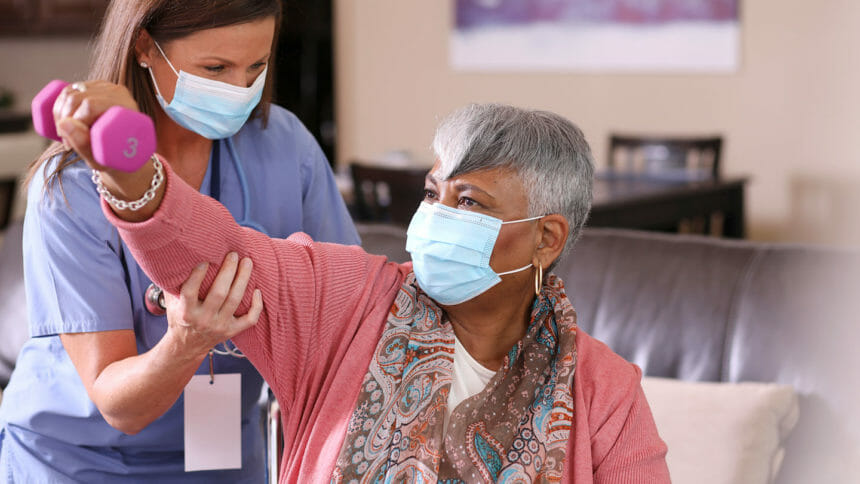
The Patient Driven Payment Model has become a bright spot during the COVID-19 pandemic for many providers two years after its implementation — but providers shouldn’t expect that shining light to last for long.
That’s according to experts who believe that the higher pay and downturn in therapy realized by some providers will be justification for the Centers for Medicare & Medicaid Services to adjust pay rates. Key stakeholders provided a wide range of views in observing the second anniversary of PDPM, which went into effect Oct. 1, 2019 and was the biggest change to the nursing home reimbursement system in at least a generation.
PDPM was designed to eliminate the “perverse” financial incentive to deliver unnecessary therapy, but instead it created a perverse incentive to ration therapy, according to Marc Zimmet, CEO of Zimmet Healthcare Services Group.
“Despite all the attention to diagnosis coding, there is virtually no rate variability among the PDPM PT/OT groups,” Zimmet told McKnight’s Long-Term Care News on Tuesday.
Zimmet’s CORE Analytics application has found that there is only a $1.47 difference in the PT/OT component through August 2021 among facilities reporting total PDPM rates in the top and bottom quartiles of the database.
When including speech, PDPM per diem rehab reimbursement is a few dollars more per day than the therapy component of trended RUG-IV averages — and this has nothing to do with pandemic distortion, Zimmet said.
“Because therapy reimbursement is not tied to the amount of treatment provided, rehab departments may face a new kind of scrutiny during PDPM audits,” he explained.
He added that he expects PT/OT weights to be recalibrated, resulting in greater variability among the four condition categories.
“Based on CORE’s ongoing analysis, therapy charges on the UB-04 make this change inevitable,” Zimmet said.
Changes to the reimbursement model are expected for skilled nursing facilities. CMS announced earlier this year announced that aggregate spending under PDPM unintentionally increased by 5.3%, or $1.7 billion, when compared to what it would have paid SNFs under the old RUG-IV model. Although government officials later conceded that those calculations might have been higher than appropriate, it is still widely believed pay rates will be trimmed in the future. Any changes to PDPM reimbursements, however, wouldn’t come before next year’s (FY 2023) SNF PPS proposed rule.
PDPM clawback
Jim Shearon, vice president of clinical solutions for Real Time Medical Systems, thinks providers have been actually much more than 5% over budget-neutral, but the numbers have been blurred by the pandemic. He recommends providers actually prepare for a “double-digit” reduction.
Or, he theorizes, CMS might hit with a smaller clawback, then increase the number of denied claims for old records submitted under certain codes, such as the heavily used “isolation.”
Another area where CMS might make changes to account for over-coding: depression. Diagnoses went from 4% of the population to 13% under PDPM.
“Is it because we’re documenting it better, because we know it would have an impact on our reimbursement?” Shearon said during the McKnight’s Fall Online Expo last week. A major industry-wide drop in therapy minutes will also draw more scrutiny, he cautioned.
“CMS warned us about this in the beginning. They did expect therapy minutes to drop, since the RUGS-based world was really centralized on therapy days and minutes … but seeing a 33% drop in therapy minutes, I’ll be interested to see what the outcome in relation to that is.”
Diagnostic coding is one of the biggest remaining challenges, with many providers still not choosing codes that will get them the credit they deserve for providing non-therapy ancillary services, he said.
Under section I-8000 for secondary diagnoses, providers have limited options and must choose codes wisely.
“It’s not just our job to fill them up, but to understand what goes in those areas is going to be really important,” Shearon said. “There are a lot of low-hanging fruits here. There’s a pretty easy way of right-sizing this.”





